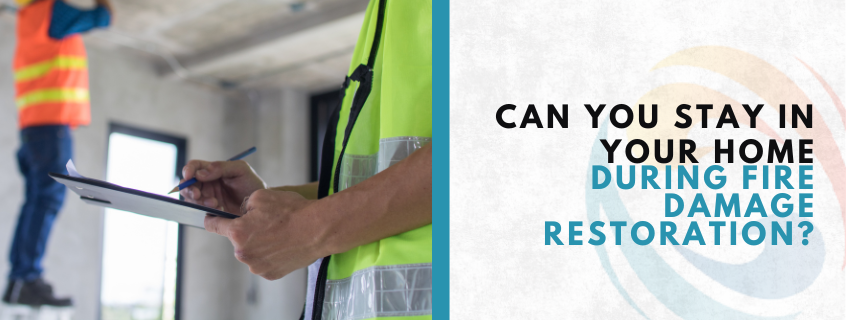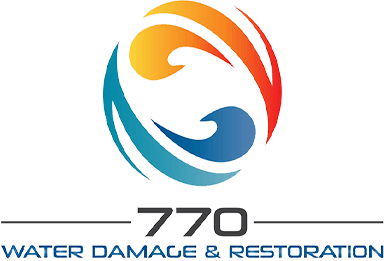The smell of smoke still lingers in the air. Your favorite couch is covered in a thin layer of soot. Blackened walls remind you of the fire that just tore through your home. You’re grateful to be safe, but now you’re faced with a big question—can you stay in home during fire damage restoration, or do you need to leave?
When considering whether to stay in home during fire damage restoration, it’s essential to weigh the pros and cons carefully.
For many homeowners, the answer is not straightforward, as staying in home during fire damage restoration can sometimes be a challenge.
This question crosses every homeowner’s mind right after the flames are gone. It’s a fair one. After all, your house is your comfort zone, your safe space. But fires don’t just damage what we can see—they also leave behind smoke, soot, chemicals, and sometimes even unsafe structures. Understanding when it’s okay to stay and when it’s not can help you avoid further stress during this tough time.
Let’s walk through what happens during fire damage restoration, what risks to look out for, and how to make the safest and smartest choice for your family.

Fire doesn’t just burn your belongings—it changes your whole living environment. While the flames might be out, the damage left behind continues to affect your home and health. And the work to clean, restore, and repair everything can take days or even weeks, depending on how bad the fire was.
So, can you stay in home during fire damage restoration? The answer depends on various factors:
- Extent of the damage
- Presence of smoke and toxic fumes
- Structural safety
- Access to clean water and electricity
- Insurance company rules
It’s crucial to evaluate if you can stay in home during fire damage restoration without compromising your health or safety.
Let’s take a closer look at each one.
Safety First: What to Check Before Deciding to Stay
Before you pack a bag or decide to stick it out, the first thing to do is get a professional damage inspection. Only a licensed restoration expert can say for sure if your home is safe enough to live in. They check the hidden spots you might not think about—attics, behind walls, underneath floors.
Ask the inspector these key questions:
- Is the air safe to breathe?
- Are the floors, stairs, and ceiling stable?
- Is the water and electrical system working?
- Are there areas sealed off for repair that will affect how we live in the house?
Once you have answers, you’ll have a better idea if it’s okay to stay or if it’s time to find a temporary place to live.
If the professional says it’s safe and the damage is limited to a small part of the house, it may be okay to remain at home during restoration. But if entire rooms are destroyed or you smell heavy smoke every time you breathe in, it’s better to leave—for your health.
What Happens During Fire Damage Restoration?
Fire damage restoration isn’t just cleaning up ash and throwing away burnt furniture. It’s a deep, step-by-step process to make your home safe again. You’ll see workers wearing masks, using fans, and sealing off parts of your house.
Here’s a quick overview of what to expect:
| Stage | Description |
| Inspection | Professionals assess the damage, document everything, and make a plan. |
| Board-Up & Tarping | Broken windows and holes in the roof are sealed to protect against weather and trespassers. |
| Water Removal | If firefighters used water, the team removes all standing water and dries the space. |
| Smoke & Soot Cleanup | Using special tools, experts clean every surface to remove toxic residue. |
| Odor Removal | Strong machines called ozone generators or air scrubbers remove the smoky smell. |
| Rebuilding | Walls, flooring, roofing, and more are repaired or replaced. |
During this process, the noise, dust, and smell can make it hard to sleep, eat, or even relax. That’s another reason why it may be hard to stay in home during fire damage restoration, even if the structure itself is safe.
Health Risks That Come With Staying in a Fire-Damaged Home
Evaluating these factors will help you determine whether you should stay in home during fire damage restoration.
It’s essential to recognize that choosing to stay in home during fire damage restoration can affect your mental well-being.
Understanding the fire damage restoration process can help you decide if you can stay in home during fire damage restoration.
Even if your home looks okay, you may be breathing in harmful stuff left behind by the fire. The air can carry tiny particles that hurt your lungs. The walls and ceilings might still have soot and ash that irritate your skin and eyes.
Some of the biggest health risks include:
During this time, consider how much you really want to stay in home during fire damage restoration versus the potential risks involved.
Ultimately, the decision to stay in home during fire damage restoration is about assessing your personal comfort and safety.
- Carbon monoxide: This invisible gas can still be present after a fire. It’s extremely dangerous and can make you feel dizzy, tired, or even sick.
- Soot particles: These fine black dust-like substances can get into your lungs and cause coughing or breathing trouble.
- Toxic chemicals: Burned plastics, wiring, and furniture release chemicals like benzene or formaldehyde, which are not safe to inhale.
- Mold: If water was used to put out the fire and not dried up properly, mold can start to grow.
When thinking about whether you can stay in home during fire damage restoration, don’t just look at your furniture—think about the air you’re breathing.
Children, Seniors, and Pets: Are They Safe in a Home Undergoing Restoration?
Some people are more sensitive to unhealthy air or loud construction. If you have babies, young children, older adults, or pets in the house, it’s often best to move out for their safety.
Why?
- Kids and pets breathe faster and take in more air, which means they also take in more smoke or soot.
- Older adults may already have breathing problems, making it harder to deal with dusty or smoky conditions.
- Animals get scared easily with noise, strange smells, and unfamiliar workers coming and going.
In cases like this, the answer to can you stay in home during fire damage restoration becomes clear—no, especially not with vulnerable family members.
What to Do If You Can’t Stay at Home
Your family’s health and safety should be your priority when deciding to stay in home during fire damage restoration.
If professionals say it’s not safe, don’t take chances. There are a few options to consider for temporary housing:
Involving them in your decision about whether to stay in home during fire damage restoration can help ease their concerns.
- Ask your insurance company – Many homeowner’s policies include “loss of use” coverage, which pays for hotel stays or rental homes while yours is being fixed.
- Stay with family or friends – This can be a cost-saving option if someone has space for you.
- Check local disaster relief programs – Organizations like the Red Cross may help families who lose their homes to fire.
While you’re away, you can still keep in touch with the restoration team working on your home to stay updated on progress.
Tips for Making the Process Easier If You Choose to Stay
Some homeowners really want to stay home, even if it’s not easy. If you get the green light from professionals, here are some ways to make the stay safer and smoother:
- Seal off rooms being repaired with plastic sheets to block dust and particles.
- Use air purifiers with HEPA filters to clean the air.
- Keep windows open for fresh air when weather allows.
- Avoid cooking indoors if the kitchen is affected—grills or microwaves outside can help.
- Have a daily cleanup plan to remove dust, ash, and debris.
Still, remember that just because you can stay in home during fire damage restoration, doesn’t mean you should if it’s too uncomfortable or unhealthy.
If you decide to stay in home during fire damage restoration, ensure you have a plan to manage the discomfort.
How Long Does Fire Restoration Take?
One of the biggest questions people have is how long they’ll be displaced—or how long they’ll need to live with repairs happening around them.
The time depends on:
- How large the fire was
- How much water damage occurred
- If there’s structural repair needed
- Availability of parts and materials
Here’s a general timeline:
| Type of Fire Damage | Estimated Repair Time |
| Small kitchen fire | 3–7 days |
| Moderate bedroom or living room fire | 2–4 weeks |
| Large structural fire | 1–3 months or more |
If your restoration is expected to take longer than a month, it’s usually best not to stay in home during fire damage restoration—the stress and noise alone can wear you down.
Choosing the Right Fire Restoration Company
Not all restoration services are the same. It’s important to choose a licensed, certified team with experience handling all kinds of fire damage. Look for companies that offer:
- 24/7 emergency help
- Full damage assessment and documentation
- Smoke and odor removal
- Full reconstruction services
One highly trusted option is 770 Water Damage & Restoration. They have years of experience helping homeowners get their homes—and their lives—back after disaster strikes.
If you’re specifically dealing with water damage from the firefighters’ hoses, be sure to explore professional water damage restoration to prevent mold or rot from setting in.
How to Stay in the Loop During the Restoration Process
If you do choose to leave your home during restoration, make sure the team you hire keeps you updated every step of the way. Ask for:
- Daily progress reports
- Photos of repairs
- Estimates for completion dates
- Easy communication by phone or email
To stay involved without the stress, use their contact form to reach the restoration team directly and ask your questions as soon as they come up.
You can also check if they offer location-specific services—for example, those needing help in Southern California can explore water damage restoration in West Covina.
Final Thoughts: Is It Worth Staying in Your Home?
In the end, deciding whether you can stay in your home during Fire Damage Restoration Malibu depends on the extent of the damage, the current air quality, and how comfortable you feel in the space.
If conditions are safe, clean, and relatively quiet, staying might be an option. But if you’re dealing with constant noise, lingering debris, or hazardous air particles, it’s perfectly okay to find temporary shelter. Your safety, peace of mind, and well-being come first.
Be sure to talk to your insurance provider and consult your Fire Damage Restoration Malibu team. Make the decision that fits your unique situation, not just your budget.
And remember: No matter how overwhelming things look now, your home can absolutely be restored and made whole again.
Frequently Asked Questions (FAQs)
Can I stay in my home while fire damage restoration is happening?
It depends on the level of damage. If only a small part of your home was affected and professionals confirm it’s safe, you might be able to stay. However, if there’s heavy smoke, soot, structural damage, or unsafe air, it’s usually better to stay somewhere else for your health and safety.
How do I know if it’s safe to remain at home during restoration?
A licensed fire damage restoration professional can assess your home and tell you if it’s safe. They’ll check for harmful particles in the air, weak floors or ceilings, and whether you have working utilities. Never assume it’s safe without a full inspection.
What should I do if my kids or pets are sensitive to the smoke or noise?
If you have children, seniors, or pets, it’s usually best to leave the home. Their bodies are more sensitive to airborne particles and the stress of ongoing repair work. Staying in a hotel, with family, or in temporary housing is a safer option.
Will my insurance help cover temporary housing if I can’t stay home?
Most homeowners’ insurance policies include “loss of use” coverage, which helps pay for hotels, rentals, or other temporary housing if your home is unlivable due to fire damage. Contact your provider right away to understand your coverage and options.
How long does fire damage restoration usually take?
The timeline can vary depending on how serious the fire was. Minor repairs may take less than a week, while major fires requiring structural work can take several months. A trusted restoration company will give you a clear estimate after inspecting the damage.
Consult with your restoration team about how to stay in home during fire damage restoration while maintaining safety.
Making informed choices about whether to stay in home during fire damage restoration is essential for your peace of mind.
Discussing your situation with professionals can aid in deciding whether to stay in home during fire damage restoration.
Ultimately, the choice to stay in home during fire damage restoration should consider both emotional and physical factors.
Also, remember to communicate with your restoration team about your choice to stay in home during fire damage restoration.
Your comfort level while choosing to stay in home during fire damage restoration can significantly impact your recovery.
Ensuring the safety of everyone involved when you stay in home during fire damage restoration is crucial.
Always keep in mind that the decision to stay in home during fire damage restoration is ultimately yours.
Stay informed and engaged in the restoration process is key if you choose to stay in home during fire damage restoration.


